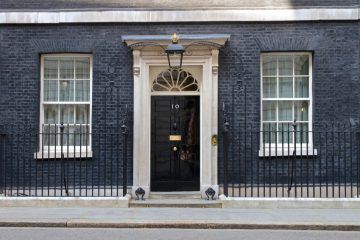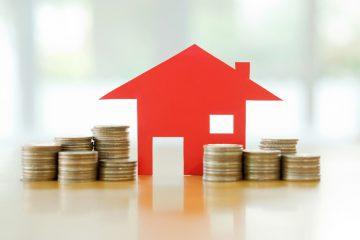House Prices Will Fall by 1% in 2017, Predicts Countrywide
House prices are expected to fall by 1% in 2017, according to the latest predictions from property firm Countrywide.
Today’s report also forecasts that house price growth will slow to 2.5% across the UK this year, but will recover to 2% in 2018, following next year’s decline.
Countrywide believes that house price growth will slow across all regions of the UK in 2016 and 2017, with recovery expected to begin at the end of next year and into 2018.
London is expected to see price growth slow to 3.5% this year, ahead of a 1.25% decrease in 2017 and a recovery to 2% in 2018. The firm predicts that prime central London will be the hardest hit, with price growth forecast to fall by 6% in 2016, rising to 0% in 2017 and 4% in 2018.
Across the south and East of England, price growth is also expected to slow in 2016, followed by small declines in 2017, before returning to positive growth in 2018.
Price growth in the South East will ease to 3.5% in 2016, down from 9.6% in 2015 and fall to -1% in 2017, according to Countrywide. The firm forecasts a similar path for house prices in the East and South West, as prices adjust to weaker economic conditions and previous strong growth.

House Prices Will Fall by 1% in 2017, Predicts Countrywide
Weaker economic conditions are also expected to hit prices in the north, Midlands and Wales.
Countrywide predicts that price growth will drop to 0.5% in 2016 and -0.25% in 2017 in the North East. Price growth in the North West, Yorkshire and the Humber, Wales and the Midlands is also expected to slow over 2016. Next year is also likely to see small declines too, as uncertainty surrounding the EU referendum impacts investment and labour markets, despite the support of a weaker currency.
The vote to leave the EU has unsettled the UK economy, Countrywide reports, as uncertainty surrounding the arrangements for Brexit affect trade and future economic growth.
The firm forecasts a weaker economy, which will hit house prices and property sales through consumer confidence, household incomes and the labour market.
Although this is not the only factor affecting the path of house prices, it says. Higher Stamp Duty rates are continuing to take their toll on the top end of the market, and after years of double-digit house price growth, expectations of future capital gains have weakened in many areas, leading to reduced demand.
However, the report adds that the continuing lack of housing supply and very low mortgage rates will remain a supportive factor for house prices. Putting its predictions into context, Countrywide expects prices to return to levels seen in the first quarter of this year.
Nevertheless, it points out that there are higher than usual risks at this time, given the nature of the challenges facing the country. The firm says that future house price growth will be dominated by the UK’s negotiations with the EU. It believes an orderly exit is in the interest of the remaining EU members and global economies – this gives some room for an upturn to the forecasts.
The Chief Economist at Countrywide, Fionnuala Earley, comments: “Forecasts in the current environment are trickier than ever, as the vote to leave the EU has thrown up many risks. Our central view is that the economy will avoid a hard landing, which is good news for housing markets. However, the weaker prospects for confidence, household incomes and the labour market mean that we do expect some modest falls in house prices, before they return to positive growth towards the end of 2017 and into 2018.
“Not all of the corrections are due to the vote to leave the EU. Stamp Duty and weaker house price growth expectations, particularly in London’s prime markets, have a part to play. There are supports to prices on the supply side from the continuing mismatch of supply. On the demand side, ultra low interest rates and the significant discounts available to overseas buyers, resulting from the fall in sterling, will help to support prices too.”







